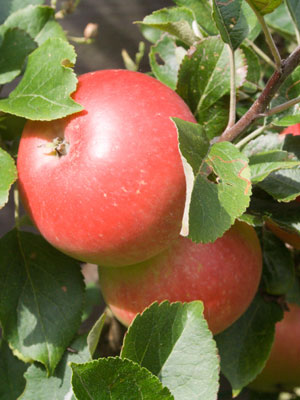
Apple trees are among the foremost beautiful orchard trees with their large, spreading habit and warm, smooth bark. But, they have annual pruning to stay them productive. Pruning serves several purposes:
Pruning opens the cover so light can reach all the leaves, ensuring more high-quality fruit.
Pruning allows for better air circulation which may hamper on disease and bug problems.
Pruning ensures that branches have space to grow therefore the tree grows strong.
Pruning a fruit tree isn’t hard and once you understand the fundamentals, you’ll become a professional. Read on to find out everything you would like to understand about pruning apple trees.
PRUNING A YOUNG fruit tree
Chances are, you’ll plant one among two sorts of trees. Very young bare-root trees are referred to as whips. These trees don’t have any branches yet. After planting, cut the tip, therefore, the whipping tree stands 36 to 45 inches high. rock bottom branches on the tree will form slightly below this cut so believe how high you would like those lowest branches to be when making the cut.
Many nurseries sell larger potted apple trees that have already got branches. These trees are an honest choice if you reside during a dry, harsh climate where bare root plantings grow unreliably, but they cost tons quite bare root trees. Prune these trees after planting only to get rid of limbs that are broken, narrow, or too low on the tree.
Early next spring, it’s time to prune again. check out the tree. You’ll want four or five main branches or scaffolds. These branches should be no less than 24 inches from the ground—36 inches is even better. The branches should be evenly spaced a minimum of 5 inches from one another. Basically, you’re trying to find a branch arrangement almost like the spokes of a wheel. Remove all other branches, and particularly people who are narrowly crotched, which suggests that they grow very near another branch.
PRUNING OLDER APPLE TREES
As the tree grows, you’ll select a second and third tier of scaffolds. Again, aim for a wheel or star shape with the limbs evenly distributed around the trunk of the tree. Remove all other limbs, especially people who grow vertically or that are approximate.
Prune back the upper branches in order that they are shorter than the lower branches, creating a Christmas tree shape. This method allows light to succeed in the lower branches in order that they bear fruit and remain healthy.
Prune the central leader per annum, as well. The central leader is that the main branch running from the trunk of the tree straight up through the center. All other branches grow from the central leader. When the central leader reaches the peak you would like it to be, start pruning. Dwarf trees typically grow 10 to 12 feet, while a typical tree is best kept at 14 to 16 feet high. Prune the central leader annually so it’s slightly above the closest branch. It should be the very best branch on the tree.
WHEN TO PRUNE
In general, you’ll prune in late winter while the tree is dormant before new leaves emerge. A dry, cool late winter day is right. There are several advantages to dormant pruning, the most one being that when the tree is bare of leaves, you’re better ready to see its form and make wise pruning choices.
If you prune within the summer or early fall, you run several risks. Diseases and bug pests are active during these times and you’re likely to spread them through pruning. Additionally, pruning encourages new vegetative growth. If you prune within the summer or fall, the new growth won’t have time to harden off and can likely be damaged or killed by frost.
HOW TO MAKE CUTS
First of all, you want to have the proper tools for work. Use sharp shear for branches but a half-inch thick. Use a handsaw for larger branches. Keep your tools sharp and clean. When you’re curtailing the ideas of branches, move ¼ inch above an outward-facing bud. When cutting a branch back to the trunk, searching for the collar, which may be a small knob between the trunk and therefore the branch. traverse this area. Cutting flush with the trunk leaves the tree hospitable infection.
APPLE TREE PRUNING CONSIDERATIONS AND CAUTIONS
In addition to the annual late-winter pruning, you would possibly need to do additional pruning for the subsequent situations:
Remove water spouts that get older or down vertically from branches. These vegetative growths serve no purpose but divert energy from the tree.
Remove dead or damaged branches.
Remove branches killed by pear blight or other diseases.
Remove the weakest of a pair of branches that grow across one another or rub against one another.
You can prune anytime to repair these problems, but be especially careful when pruning out limbs damaged by pear blight to avoid spreading the disease. Prune a minimum of 8 to 10 inches below the obviously diseased portions. Dip your pruning tools during a solution of 1 cup chlorine bleach to 10 cups water in between cuts. Bleach corrodes pruning tools so rinse the tools carefully and oil them after use.
